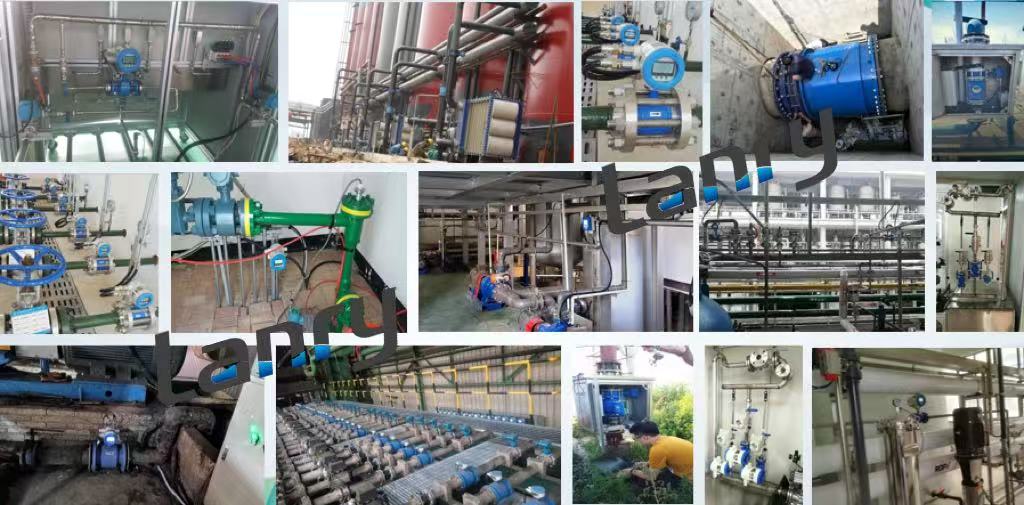Introduction
Electromagnetic flow meters are widely utilized in industries to measure the flow rate of conductive fluids. They operate on the principle of Faraday's law of electromagnetic induction, where a magnetic field is applied across a fluid - filled pipe, and the induced voltage is proportional to the fluid's velocity. This article delves into the advantages and disadvantages of these meters.
Advantages
High Accuracy
Electromagnetic flow meters are renowned for their high precision. They can typically achieve an accuracy of ±0.2% to ±0.5% of the measured value. This makes them ideal for applications where exact flow measurement is crucial, such as in the pharmaceutical industry. Precise dosing of liquid ingredients is essential for producing consistent and high - quality drugs, and electromagnetic flow meters can ensure this accuracy. In chemical manufacturing, accurate measurement of reactant flow rates is vital for maintaining product quality, and these meters meet this demand effectively.
Wide Flow Range
These meters have an impressively wide flow range. They can measure both extremely low and high flow rates of conductive fluids. This versatility allows them to be used in diverse scenarios. For example, in wastewater treatment plants, they can measure the large - volume flow of effluent, while in laboratories, they can accurately measure the minute flow of chemical samples. Their ability to handle such a broad range of flow rates without significant loss of accuracy is a major advantage.
Low Pressure Drop
Electromagnetic flow meters cause minimal pressure drop in the fluid flow. Since there are no moving parts or obstructions in the flow path, the fluid can flow through the meter with little resistance. This is beneficial in applications where maintaining high fluid pressure is important, such as in oil and gas pipelines. Reducing pressure drop helps to save energy, as less power is required to pump the fluid through the system.
Suitable for a Variety of Fluids
They are compatible with a wide range of conductive fluids, including corrosive and abrasive substances. For instance, in the mining industry, they can measure the flow of slurries, which are often abrasive due to the presence of solid particles. In the chemical industry, they can handle highly corrosive acids and alkalis. This adaptability makes them a preferred choice in many harsh industrial environments.
Linear Output
The output of electromagnetic flow meters is linearly proportional to the flow rate of the fluid. This linear relationship simplifies the calibration process and makes it easier to interpret and use the data. It also allows for straightforward integration with control systems, enabling precise control of fluid flow based on the meter readings.
Disadvantages
Limited to Conductive Fluids
Electromagnetic flow meters can only be used to measure the flow of conductive fluids. Fluids with very low electrical conductivity, such as distilled water or some hydrocarbons, cannot be accurately measured using this type of meter. This limitation restricts their application in industries where non - conductive fluids are prevalent, like the petrochemical industry for certain processes involving non - polar solvents.
High Initial Cost
The purchase and installation costs of electromagnetic flow meters are relatively high compared to some other types of flow meters. The need for a magnetic field generator, electrodes, and sophisticated signal - processing electronics contributes to the higher price. Additionally, the installation may require specialized knowledge and skills, further increasing the overall cost. This can be a deterrent for small - scale industries or projects with limited budgets.
Susceptibility to External Interference
External magnetic fields and electrical noise can interfere with the operation of electromagnetic flow meters. In industrial settings with a lot of electrical equipment, such as power plants or large manufacturing facilities, stray magnetic fields from motors, transformers, or other electrical machinery can affect the accuracy of the meter readings. Shielding and proper grounding are often required to minimize this interference, which adds to the complexity and cost of installation and maintenance.
Maintenance Requirements
Regular maintenance is necessary to ensure the accurate operation of electromagnetic flow meters. The electrodes, which are in contact with the fluid, can become fouled or corroded over time, especially when measuring corrosive fluids. This can lead to inaccurate readings. Cleaning or replacing the electrodes periodically is often required, and this maintenance work needs to be carried out carefully to avoid damaging the meter.
In conclusion, electromagnetic flow meters offer several significant advantages in terms of accuracy, flow range, and fluid compatibility. However, their limitations regarding fluid conductivity, high cost, susceptibility to interference, and maintenance requirements need to be carefully considered when choosing a flow - measurement device for a particular application.

Post time: Feb-24-2025

